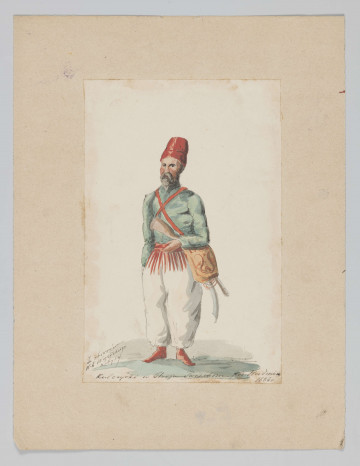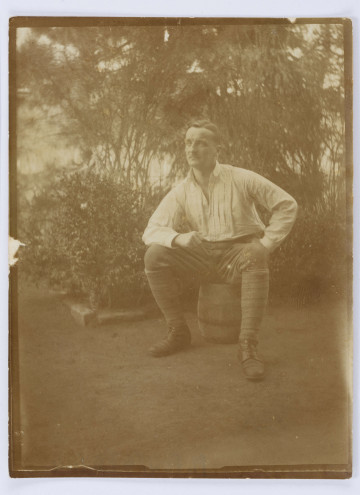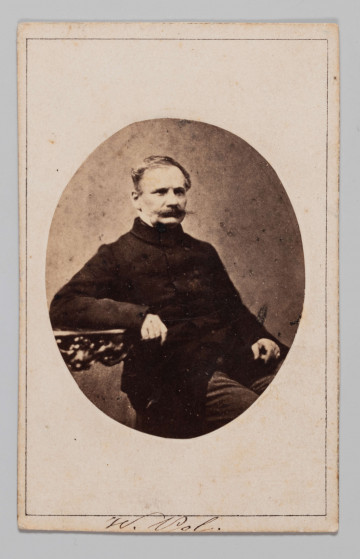
Kulczycki in a Turkish costume
National Museum in Lublin
Part of the collection: Portrait painting
Wacław Piotr Rzewuski (1706-1779), the coat of arms Krzywda, was a statesman, politician and political writer. At the close of the Polish-Lithuanian Commonwealth, he held several offices, including that of Field Hetman and Great Hetman of the Crown, Castellan of Kraków and Marshal of the Crown Tribunal in Lublin. It is his official portrait – Rzewuski is wearing the ceremonial attire of the Cavaliers of the Order of the White Eagle. He is holding a mace in his hand, a sign of dignity, and a sabre with a richly embellished hilt is at his belt. He stands upright, with his head proudly lifted. His face is expressive, and his hair is shaved high in the aristocratic fashion; only his beard is old-fashioned. It is a sign and a memento of the dramatic experiences he went through. As one of the leaders of the anti-Russian opposition during the 1767 Sejm session, he was kidnapped by the Russian deputy, Nikolai Repnin, deported from the country and imprisoned in Kaługa. Thus, alongside the Bishop of Kraków, Kajetan Sołtyk, and the Bishop of Kyiv, Józef Załuski, he was one of the first Polish exiles. He returned to Poland in 1773 and continued to be involved in political life. Rzewuski also contributed to culture. As a writer, he popularised French culture in the Polish-Lithuanian Commonwealth. At his residence in Podhorce (now Ukraine), he organised one of the most splendid private theatres in Europe. Plays by classical authors were performed there.
The inscription '[...] Castellan of Kraków, Great Crown Hetman', visible in the background of the painting, indicates that the portrait was painted not earlier than 1778 when Rzewuski became Castellan of Kraków. The author's name is not known, as is the case with most of the so-called Sarmatian portraits to which the painting belongs. As early as the 16th century, Poland was called Sarmatia, and the ideology deriving Poles from an ancient people was vividly reflected in lifestyle, customs, dress and art. Its influence continued well into the 18th century, as the nobility eagerly recognised themselves as descendants of the brave Sarmatians and chivalrous virtues were in high demand due to the constant external threat and many wars.
Barbara Czajkowska
Author / creator
Dimensions
cały obiekt: height: 62 cm, width: 90 cm
Object type
painting
Technique
oil technique
Material
canvas, oil-based paint
Creation time / dating
Creation / finding place
Owner
The National Museum in Lublin
Identification number
Location / status

National Museum in Lublin

1901 — 1930
National Museum in Lublin

1858
National Museum in Lublin
DISCOVER this TOPIC
Castle Museum in Łańcut
DISCOVER this PATH
Educational path